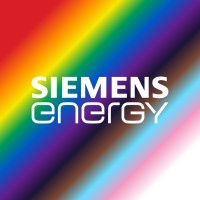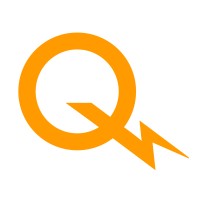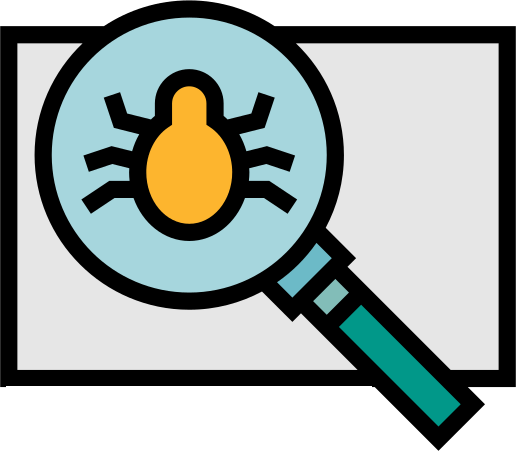Company Details
siemens-energy
51,145
2,585,639
22113
siemens-energy.com
333
SIE_2459990
Completed

Siemens Energy Company CyberSecurity Posture
siemens-energy.comSiemens Energy is one of the world’s leading energy technology companies. The company works with its customers and partners on energy systems for the future, thus supporting the transition to a more sustainable world. With its portfolio of products, solutions and services, Siemens Energy covers almost the entire energy value chain – from power generation and transmission to storage. The portfolio includes conventional and renewable energy technology, such as gas and steam turbines, hybrid power plants operated with hydrogen, and power generators and transformers. A majority stake in the wind power subsidiary Siemens Gamesa Renewable Energy (SGRE) makes Siemens Energy a global market leader for renewable energies. An estimated one-sixth of the electricity generated worldwide is based on technologies from Siemens Energy. Siemens Energy employs 103,000 people worldwide in more than 90 countries and generated revenue of around €39.1 billion in fiscal year 2025. Siemens Energy is a trademark licensed by Siemens AG
Company Details
siemens-energy
51,145
2,585,639
22113
siemens-energy.com
333
SIE_2459990
Completed
Between 750 and 799

 Siemens Energy Global Score (TPRM)
Siemens Energy Global Score (TPRM)XXXX

Description: Siemens has disclosed a critical vulnerability in SINAMICS S200 drive systems that could lead to a complete system compromise. The vulnerability, tracked as CVE-2024-56336, exposes affected devices to unauthorized manipulation of industrial processes, equipment damage, disruptions, and data theft due to an unlocked bootloader, which allows attackers to install malicious code without authentication. The risk is exacerbated by the device's wide use in critical industrial, manufacturing, energy, and infrastructure sectors. Although Siemens has not released a fix, it urges customers to implement network segregation and monitor systems while it works on a remedy.
Description: The five new MOVEit assaults victims revealed on the dark web leak site for the Clop ransomware organization include the industrial behemoths Siemens Energy, Schneider Electric, werum.com, UCLA (http://ucla.edu), Abbie (http://abbvie.com), and Abbie. Worldwide, vital national infrastructures use Industrial Control Systems (ICS) from Siemens Energy and Schneider Electric. Threat actors claim they were able to compromise 100 different firms utilising the most recently revealed MOVEit Transfer vulnerability CVE-2023-34362. The US government offers rewards for information that leads to the arrest, indictment, or location of danger actors.


No incidents recorded for Siemens Energy in 2025.
No incidents recorded for Siemens Energy in 2025.
No incidents recorded for Siemens Energy in 2025.
Siemens Energy cyber incidents detection timeline including parent company and subsidiaries

Siemens Energy is one of the world’s leading energy technology companies. The company works with its customers and partners on energy systems for the future, thus supporting the transition to a more sustainable world. With its portfolio of products, solutions and services, Siemens Energy covers almost the entire energy value chain – from power generation and transmission to storage. The portfolio includes conventional and renewable energy technology, such as gas and steam turbines, hybrid power plants operated with hydrogen, and power generators and transformers. A majority stake in the wind power subsidiary Siemens Gamesa Renewable Energy (SGRE) makes Siemens Energy a global market leader for renewable energies. An estimated one-sixth of the electricity generated worldwide is based on technologies from Siemens Energy. Siemens Energy employs 103,000 people worldwide in more than 90 countries and generated revenue of around €39.1 billion in fiscal year 2025. Siemens Energy is a trademark licensed by Siemens AG


Hydro-Québec produit, transporte et distribue de l'électricité. Elle exploite essentiellement des énergies renouvelables, plus particulièrement l'hydroélectricité. Elle fait aussi de la recherche dans les domaines reliés à l'énergie et s'intéresse activement à l'efficacité énergétique. En outre, ell
What if your next career adventure started with ENGIE? Joining ENGIE means being part of a company at the forefront of the energy transition, committed to accelerating the shift to a carbon-neutral economy. With 98,000 employees across 30 countries, ENGIE's operations cover the entire energy val
With more than 180 years of history, Iberdrola is today a global energy leader, the leading wind power producer and one of the largest electricity companies in the world in terms of stock market capitalisation. We have been committed to clean energy for more than 20 years with the objective of exce
.png)
Siemens is driving Europe's rail digitalization and wind power sustainability while facing supply chain cybersecurity threats targeting its...
We explored the cybersecurity threats to an energy system increasingly consisting of smaller renewables and grid edge technologies.
Dr. Judith Wunschik from Siemens Energy spotlights the role of cybersecurity in the digital transformation of the energy sector.
The U.S. Cybersecurity and Infrastructure Security Agency (CISA) on Tuesday issued two new advisories and updated two others,...
Cybersecurity has become a critical capability for the energy and manufacturing sectors, especially as rising cyber threats coincide with a surge in energy...
The U.S. Cybersecurity and Infrastructure Security Agency (CISA) has issued ten industrial control systems (ICS) advisories,...
As energy infrastructure faces growing cybersecurity risks, utilities are warming to artificial intelligence as a form of protection.
This week in cybersecurity from the editors at Cybercrime Magazine.
The power sector is on the frontlines of a global cybersecurity battlefield. As decarbonization and decentralization reshape the entire power generation and...

Explore insights on cybersecurity incidents, risk posture, and Rankiteo's assessments.
The official website of Siemens Energy is https://www.siemens-energy.com.
According to Rankiteo, Siemens Energy’s AI-generated cybersecurity score is 786, reflecting their Fair security posture.
According to Rankiteo, Siemens Energy currently holds 0 security badges, indicating that no recognized compliance certifications are currently verified for the organization.
According to Rankiteo, Siemens Energy is not certified under SOC 2 Type 1.
According to Rankiteo, Siemens Energy does not hold a SOC 2 Type 2 certification.
According to Rankiteo, Siemens Energy is not listed as GDPR compliant.
According to Rankiteo, Siemens Energy does not currently maintain PCI DSS compliance.
According to Rankiteo, Siemens Energy is not compliant with HIPAA regulations.
According to Rankiteo,Siemens Energy is not certified under ISO 27001, indicating the absence of a formally recognized information security management framework.
Siemens Energy operates primarily in the Renewable Energy Power Generation industry.
Siemens Energy employs approximately 51,145 people worldwide.
Siemens Energy presently has no subsidiaries across any sectors.
Siemens Energy’s official LinkedIn profile has approximately 2,585,639 followers.
Siemens Energy is classified under the NAICS code 22113, which corresponds to Electric Power Generation.
Yes, Siemens Energy has an official profile on Crunchbase, which can be accessed here: https://www.crunchbase.com/organization/siemens-energy-6cf7.
Yes, Siemens Energy maintains an official LinkedIn profile, which is actively utilized for branding and talent engagement, which can be accessed here: https://www.linkedin.com/company/siemens-energy.
As of November 27, 2025, Rankiteo reports that Siemens Energy has experienced 2 cybersecurity incidents.
Siemens Energy has an estimated 320 peer or competitor companies worldwide.
Incident Types: The types of cybersecurity incidents that have occurred include Vulnerability and Ransomware.
Detection and Response: The company detects and responds to cybersecurity incidents through an containment measures with network segregation, containment measures with monitoring systems, and and .
Title: MOVEit Transfer Vulnerability Exploited by Clop Ransomware Group
Description: The Clop ransomware group has exploited the MOVEit Transfer vulnerability CVE-2023-34362 to compromise 100 different firms, including industrial giants Siemens Energy and Schneider Electric, as well as other entities such as werum.com, UCLA, and AbbVie.
Type: Ransomware
Attack Vector: Exploit of MOVEit Transfer vulnerability
Vulnerability Exploited: CVE-2023-34362
Threat Actor: Clop ransomware group
Motivation: Financial gain, data theft
Title: Critical Vulnerability in Siemens SINAMICS S200 Drive Systems
Description: A critical vulnerability in Siemens SINAMICS S200 drive systems, tracked as CVE-2024-56336, exposes affected devices to unauthorized manipulation of industrial processes, equipment damage, disruptions, and data theft due to an unlocked bootloader, which allows attackers to install malicious code without authentication.
Type: Vulnerability
Attack Vector: Unlocked bootloader
Vulnerability Exploited: CVE-2024-56336
Common Attack Types: The most common types of attacks the company has faced is Vulnerability.

Systems Affected: Industrial Control Systems (ICS)

Systems Affected: SINAMICS S200 drive systems
Operational Impact: Equipment damageDisruptionsData theft

Entity Name: Siemens Energy
Entity Type: Industrial
Industry: Energy
Size: Large

Entity Name: Schneider Electric
Entity Type: Industrial
Industry: Energy
Size: Large

Entity Name: UCLA
Entity Type: Educational
Industry: Education
Location: Los Angeles, CA, USA
Size: Large

Entity Name: AbbVie
Entity Type: Corporate
Industry: Pharmaceuticals
Size: Large

Entity Name: Siemens
Entity Type: Company
Industry: Industrial, Manufacturing, Energy, Infrastructure

Containment Measures: Network segregationMonitoring systems
Network Segmentation: True
Handling of PII Incidents: The company handles incidents involving personally identifiable information (PII) through by network segregation, monitoring systems and .

Ransomware Strain: Clop

Recommendations: Implement network segregation, Monitor systemsImplement network segregation, Monitor systems

Source: Dark Web Leak Site
Additional Resources: Stakeholders can find additional resources on cybersecurity best practices at and Source: Dark Web Leak Site.

Root Causes: Unlocked bootloader
Last Attacking Group: The attacking group in the last incident was an Clop ransomware group.
Most Significant System Affected: The most significant system affected in an incident was Industrial Control Systems (ICS) and .
Containment Measures in Most Recent Incident: The containment measures taken in the most recent incident was Network segregationMonitoring systems.
Most Significant Recommendation Implemented: The most significant recommendation implemented to improve cybersecurity was Implement network segregation and Monitor systems.
Most Recent Source: The most recent source of information about an incident is Dark Web Leak Site.
.png)
Angular is a development platform for building mobile and desktop web applications using TypeScript/JavaScript and other languages. Prior to versions 19.2.16, 20.3.14, and 21.0.1, there is a XSRF token leakage via protocol-relative URLs in angular HTTP clients. The vulnerability is a Credential Leak by App Logic that leads to the unauthorized disclosure of the Cross-Site Request Forgery (XSRF) token to an attacker-controlled domain. Angular's HttpClient has a built-in XSRF protection mechanism that works by checking if a request URL starts with a protocol (http:// or https://) to determine if it is cross-origin. If the URL starts with protocol-relative URL (//), it is incorrectly treated as a same-origin request, and the XSRF token is automatically added to the X-XSRF-TOKEN header. This issue has been patched in versions 19.2.16, 20.3.14, and 21.0.1. A workaround for this issue involves avoiding using protocol-relative URLs (URLs starting with //) in HttpClient requests. All backend communication URLs should be hardcoded as relative paths (starting with a single /) or fully qualified, trusted absolute URLs.
Forge (also called `node-forge`) is a native implementation of Transport Layer Security in JavaScript. An Uncontrolled Recursion vulnerability in node-forge versions 1.3.1 and below enables remote, unauthenticated attackers to craft deep ASN.1 structures that trigger unbounded recursive parsing. This leads to a Denial-of-Service (DoS) via stack exhaustion when parsing untrusted DER inputs. This issue has been patched in version 1.3.2.
Forge (also called `node-forge`) is a native implementation of Transport Layer Security in JavaScript. An Integer Overflow vulnerability in node-forge versions 1.3.1 and below enables remote, unauthenticated attackers to craft ASN.1 structures containing OIDs with oversized arcs. These arcs may be decoded as smaller, trusted OIDs due to 32-bit bitwise truncation, enabling the bypass of downstream OID-based security decisions. This issue has been patched in version 1.3.2.
Suricata is a network IDS, IPS and NSM engine developed by the OISF (Open Information Security Foundation) and the Suricata community. Prior to versions 7.0.13 and 8.0.2, working with large buffers in Lua scripts can lead to a stack overflow. Users of Lua rules and output scripts may be affected when working with large buffers. This includes a rule passing a large buffer to a Lua script. This issue has been patched in versions 7.0.13 and 8.0.2. A workaround for this issue involves disabling Lua rules and output scripts, or making sure limits, such as stream.depth.reassembly and HTTP response body limits (response-body-limit), are set to less than half the stack size.
Suricata is a network IDS, IPS and NSM engine developed by the OISF (Open Information Security Foundation) and the Suricata community. In versions from 8.0.0 to before 8.0.2, a NULL dereference can occur when the entropy keyword is used in conjunction with base64_data. This issue has been patched in version 8.0.2. A workaround involves disabling rules that use entropy in conjunction with base64_data.

Get company history
















Every week, Rankiteo analyzes billions of signals to give organizations a sharper, faster view of emerging risks. With deeper, more actionable intelligence at their fingertips, security teams can outpace threat actors, respond instantly to Zero-Day attacks, and dramatically shrink their risk exposure window.
Identify exposed access points, detect misconfigured SSL certificates, and uncover vulnerabilities across the network infrastructure.
Gain visibility into the software components used within an organization to detect vulnerabilities, manage risk, and ensure supply chain security.
Monitor and manage all IT assets and their configurations to ensure accurate, real-time visibility across the company's technology environment.
Leverage real-time insights on active threats, malware campaigns, and emerging vulnerabilities to proactively defend against evolving cyberattacks.




